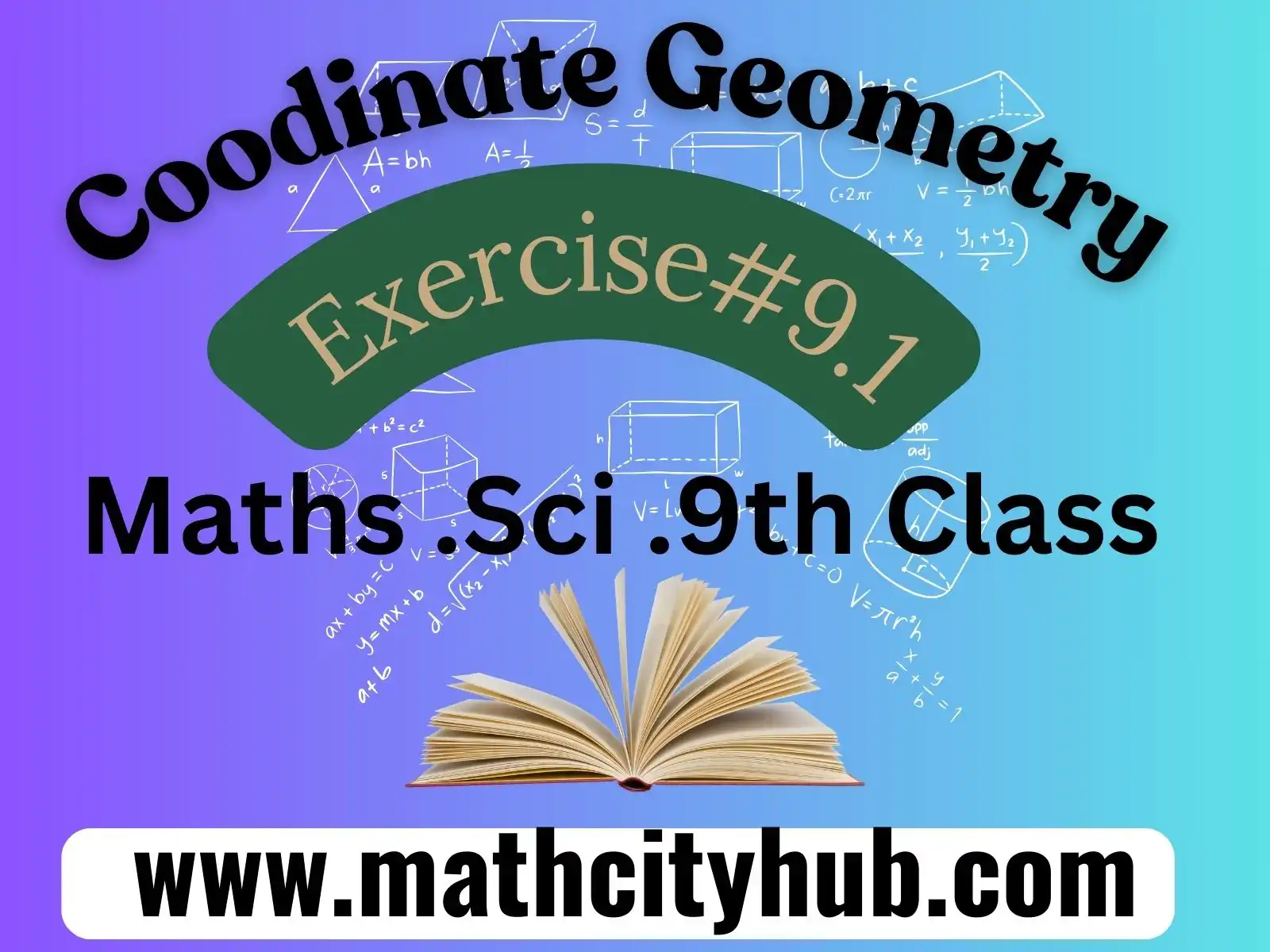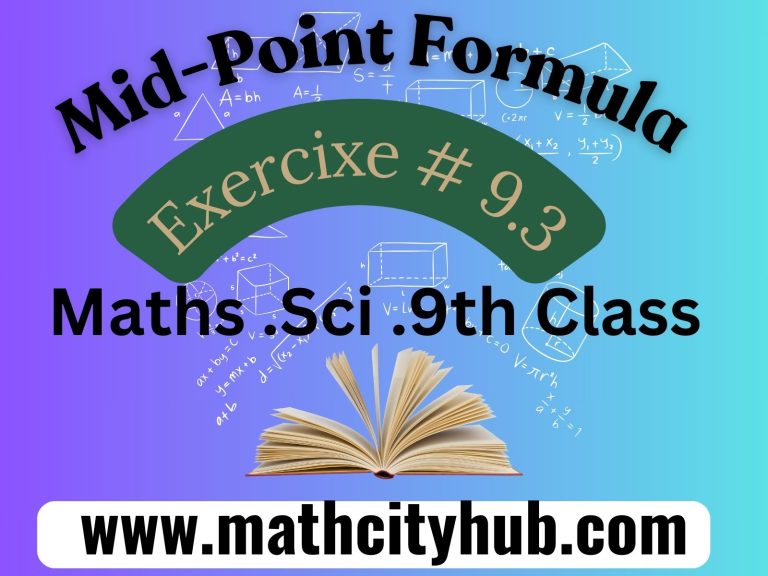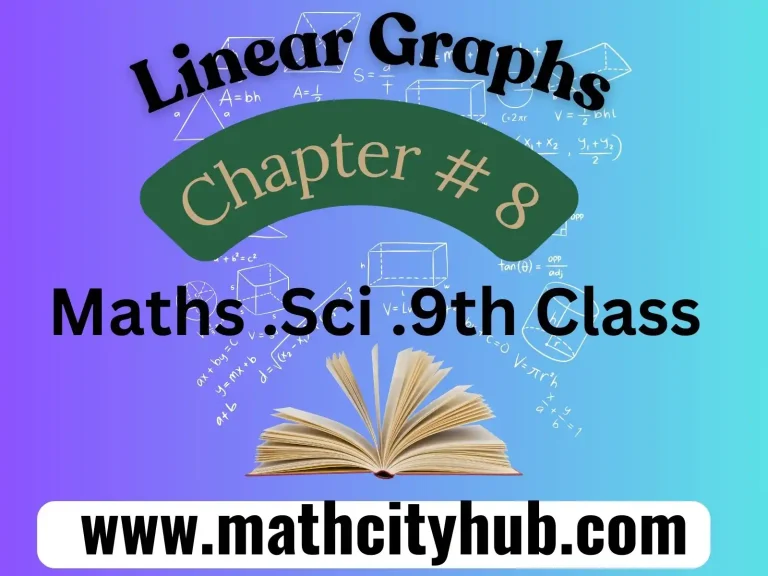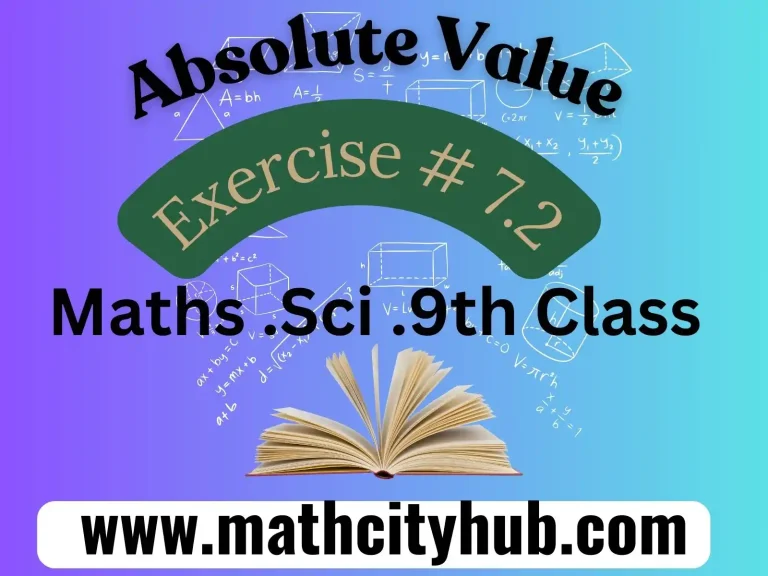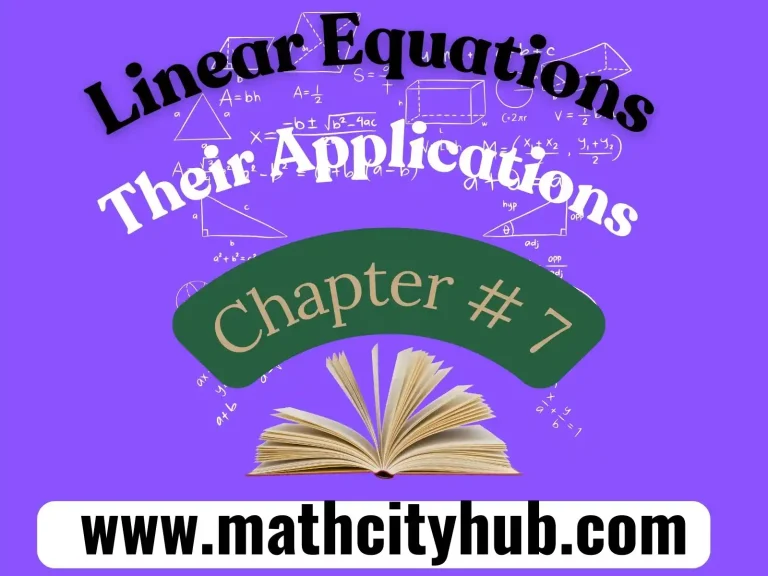Exercise 9.1:Coordinate geometry, also known as analytic geometry or Cartesian geometry, is a branch of mathematics that bridges the gap between algebra and geometry. It allows us to study geometric shapes and their properties using algebraic equations and vice versa.
Here’s a breakdown of the key concepts:
1. Coordinate System:
The foundation of coordinate geometry is the coordinate system, which is a flat surface (usually a plane) intersected by two perpendicular lines called the x-axis and the y-axis. These axes create four quadrants, each labeled with a roman numeral (I, II, III, and IV).Exercise 9.1:
2. Coordinates:
The location of any point on this plane is defined using an ordered pair of numbers, written as (x, y).
- The x-coordinate represents the horizontal distance from the origin (the point where the axes intersect) to the point, and is positive to the right and negative to the left.
- The y-coordinate represents the vertical distance from the origin to the point, and is positive upwards and negative downwards.
3. Plotting Points:
By knowing the coordinates of a point, you can plot it on the coordinate plane. To do this, locate the x-coordinate on the x-axis and move horizontally that distance. Then, locate the y-coordinate on the y-axis and move vertically that distance. The point where these two movements intersect is the plotted point.
4. Applications:
Coordinate geometry has numerous applications in various fields, including:
- Solving geometric problems: It allows us to find lengths, slopes, areas, and other properties of geometric shapes using formulas derived from algebraic relationships between coordinates.
- Graphing equations: By translating the equation from algebraic form (e.g., y = mx + b) to coordinate form, we can plot the corresponding line or curve on the coordinate plane.Exercise 9.1:
- Analyzing motion: It plays a crucial role in physics and engineering, enabling us to represent and analyze the motion of objects in terms of their position, velocity, and acceleration using coordinates and equations.
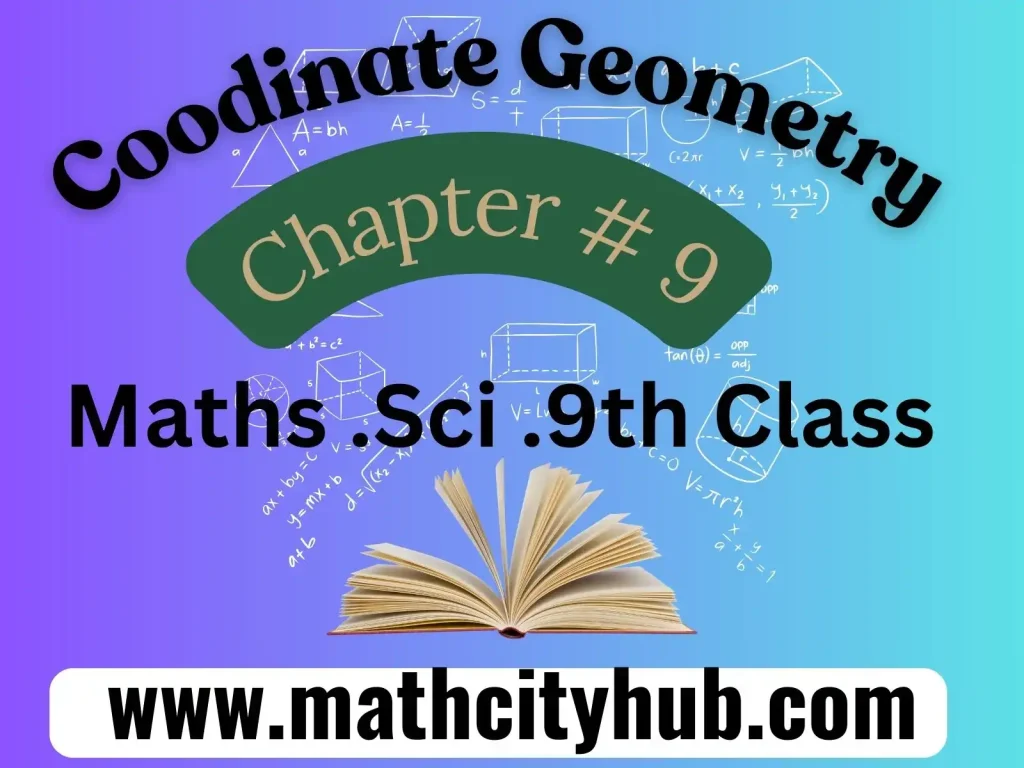
Explination
1. Plotting Points:
- Point A: (2, 3) – Move 2 units to the right on the x-axis and 3 units up on the y-axis. Point A lies in quadrant I.
- Point B: (-1, -4) – Move 1 unit to the left on the x-axis and 4 units down on the y-axis. Point B lies in quadrant III.
2. Distance between Points:
Imagine points P (x1, y1) and Q (x2, y2). The distance formula calculates the distance between them:
Distance = √[(x2 – x1)^2 + (y2 – y1)^2]
Example: Find the distance between points A (2, 3) and B (-1, -4).
Distance = √[(-1 – 2)^2 + (-4 – 3)^2] = √[9 + 49] = √58
3. Slope of a Line:
The slope (m) represents the steepness of a line. It tells you how much the y-value changes for every one unit change in the x-value. It’s calculated as:Exercise 9.1:
m = (y2 – y1) / (x2 – x1)
Example: Find the slope of the line connecting points A (2, 3) and B (-1, -4).
m = (-4 – 3) / (-1 – 2) = -7 / -3 = 7/3
4. Equation of a Line:
The slope-intercept form of the equation of a line is:
y = mx + c
where:
- m is the slope
- c is the y-intercept (the point where the line crosses the y-axis)
Using the point-slope form and information from point A and the calculated slope:
y – 3 = (7/3) * (x – 2)
y = (7/3)x – 1
5. Applications:
- Finding midpoint: The midpoint of the line segment connecting points P (x1, y1) and Q (x2, y2) is:
Midpoint = ((x1 + x2) / 2, (y1 + y2) / 2)
- Area of a triangle: Given the coordinates of three vertices, you can use formulas involving coordinates to calculate the area of a triangle.
Questions & Answers
Answer: Quadrant II (Points in quadrant II have negative x-coordinates and positive y-coordinates.)
Answer: Using the distance formula:Distance = √[(1 - 3)^2 + (-2 - 4)^2] = √[(-2)^2 + (-6)^2] = √40 = 2√10
Answer:
m = (3 - 5) / (-1 - 2) = -2 / -3 = 2/3
Answer:
Using the slope-intercept form and substituting the slope and point coordinates:y - 1 = -1(x - 4)y = -x + 5
Answer:Midpoint = ((6 + (-2)) / 2, (-3 + 1) / 2) = (2, -1)
Conclusion
In conclusion, coordinate geometry stands as a fundamental and powerful branch of mathematics that seamlessly integrates algebra and geometry. Through the ingenious use of coordinate systems, points, lines, curves, and shapes find a precise and systematic representation in the Cartesian plane.
This mathematical framework has proven indispensable in various fields, from physics and engineering to computer science and economics.Exercise 9.1:
The versatility of coordinate geometry is evident in its ability to solve real-world problems, providing a tangible link between abstract mathematical concepts and practical applications.
The Cartesian plane serves as a universal language, enabling communication and analysis across disciplines.
Moreover, coordinate geometry plays a pivotal role in shaping our understanding of space and relationships between objects. Its applications extend to diverse areas such as navigation, robotics, computer graphics, and more.
As technology continues to advance, the significance of coordinate geometry in modeling and solving complex problems is likely to grow.
In essence, coordinate geometry has stood the test of time, evolving into a cornerstone of mathematical thinking and problem-solving.Exercise 9.1:
Its elegant fusion of algebraic and geometric principles has empowered mathematicians, scientists, and engineers to explore, analyze, and innovate across a wide spectrum of endeavors.
As we move forward, the legacy of coordinate geometry persists, guiding us through the intricacies of mathematical abstraction and practical problem-solving.
Must Read:
- Exercise.3.1: Scientific Notation
- Exercise.3.2: Common and Natural Logarithm
- Exercise.3.3: Laws of Logarithm
- Exercise.3.4: Application of Logarithm
- Exercise.5.1: Factorization
- Exploring Various Types of Factorization
- Exercise.5.3:Remainder Theorem And Factor Theorem
- Exercise.5.4: Factorization of a Cubic Polynomial
- Exercise.6.1: Highest Common Factor
- Method of Finding Least Common Multiple
- Exercise.6.2: Basic Operations on Algebraic Fractions
- Exercise.6.3: Square Root of Algebraic Expression
Math Full book 9th Class
Exercise # 7.3
Azam Bodla
M.Phil. Mathematics, Content Writer, SEO Expert
Web Developer, Online Tutor
Call or WhatsApp: +923059611600
Gmail:azambodlaa@gmail.com
